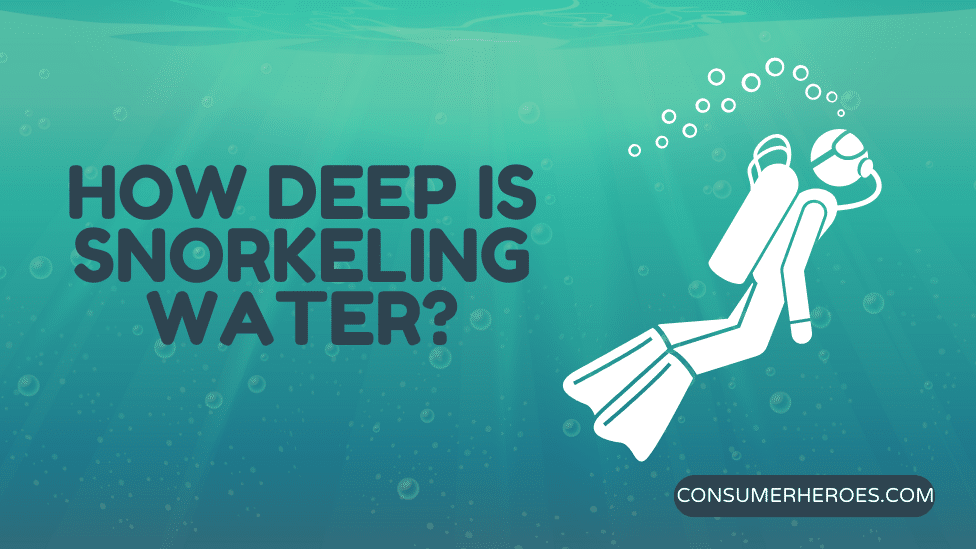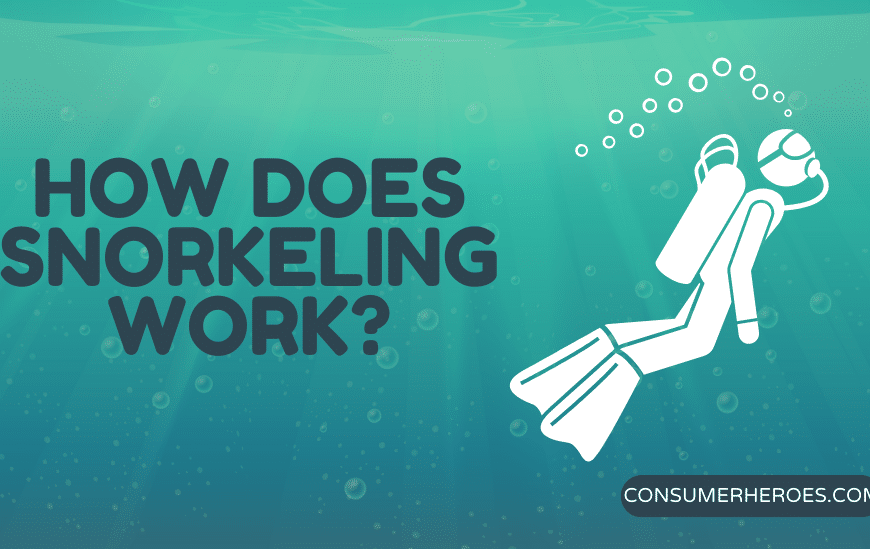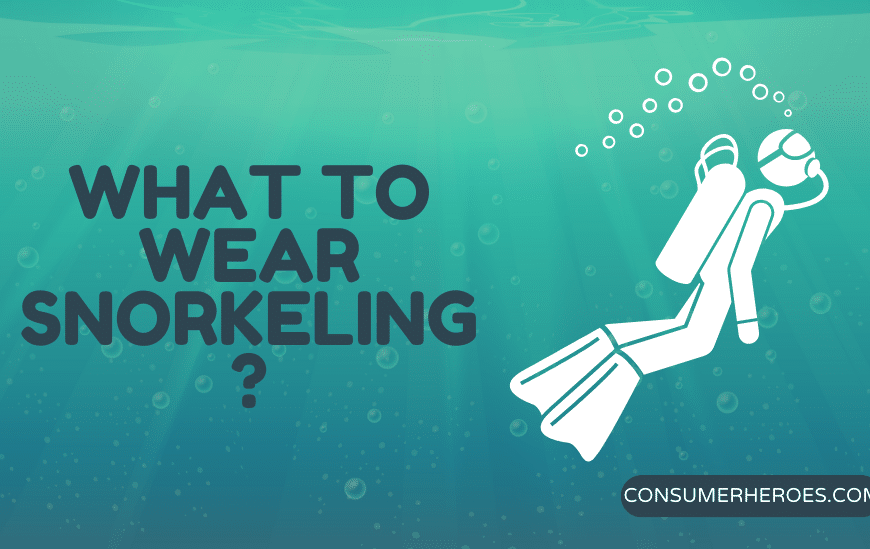Snorkeling is a popular activity that allows people to explore the underwater world without the need for scuba gear. It is a great way to observe marine life and appreciate the beauty of the ocean. However, many people are unsure about how deep they can safely snorkel and what factors can affect their ability to do so.
When it comes to snorkeling, the depth limit is typically around 10-15 feet (3-4.5 meters). This is because the pressure of the water increases as you go deeper, which can cause discomfort or even injury to the ears and sinuses. Additionally, snorkelers may become fatigued more quickly at deeper depths, which can increase the risk of accidents or drowning.
There are several factors that can affect how deep a person can safely snorkel, including their physical fitness, experience level, and the conditions of the water. It is important for snorkelers to be aware of these factors and to take appropriate precautions to ensure their safety while exploring the underwater world.
Understanding Snorkeling
Snorkeling is a popular activity that allows people to explore the underwater world without the need for scuba diving equipment. It is a fun and easy way to observe marine life in their natural habitat.
To snorkel, a person wears a mask that covers their eyes and nose, and a snorkel that allows them to breathe through their mouth while their face is submerged in the water. Some snorkelers also wear fins to help them move through the water more easily.
Snorkeling can be done in shallow or deep water, depending on the skill level of the snorkeler. Beginners may want to start in shallow water, where they can easily touch the bottom if needed. More experienced snorkelers can venture into deeper water to explore coral reefs and other underwater features.
It is important for snorkelers to be aware of their surroundings and to respect the marine life they encounter. Snorkelers should avoid touching or disturbing any animals they encounter, as this can harm both the animal and the snorkeler. It is also important to be aware of any potential hazards, such as strong currents or sharp rocks.
Overall, snorkeling is a fun and safe way to explore the underwater world. With the right equipment and knowledge, anyone can enjoy this exciting activity.
How Deep Can You Go
Snorkeling is a popular activity for people of all ages and skill levels. One of the most common questions people ask is, “How deep can you go while snorkeling?” The answer to this question depends on a variety of factors, including the individual’s experience level, physical fitness, and the conditions of the water.
Generally, snorkelers stay near the surface of the water, where they can easily see the fish and coral. The maximum depth for a typical snorkeler is around 10-15 feet. However, experienced snorkelers who are comfortable holding their breath can dive deeper, up to 30-40 feet.
It’s important to note that diving deeper than 15 feet requires additional equipment, such as fins, a mask, and a snorkel. These items help the snorkeler to conserve energy and move through the water more efficiently. It’s also important to stay aware of the water conditions, such as currents and visibility, as they can affect the snorkeler’s safety and ability to dive deeper.
In addition to equipment and water conditions, the individual’s physical fitness and experience level play a significant role in how deep they can go while snorkeling. Snorkelers who are in good physical condition and have experience holding their breath can dive deeper than those who are less experienced or less physically fit.
Overall, the maximum depth for snorkeling is around 30-40 feet, but this requires additional equipment and experience. Most snorkelers will stay near the surface of the water, where they can easily see the marine life and enjoy the beauty of the underwater world.
Safety Measures in Deep Snorkeling
When snorkeling in deep waters, safety is of utmost importance. Here are some safety measures to consider:
1. Proper Equipment
It is essential to have the right equipment when snorkeling in deep waters. A snorkel, mask, fins, and wetsuit are necessary for a comfortable and safe experience. Make sure the equipment fits well and is in good condition before entering the water.
2. Buddy System
Snorkeling with a partner is a crucial safety measure. It is always better to have someone with you in case of an emergency. Stay close to your partner and communicate regularly to ensure each other’s safety.
3. Know Your Limits
It is essential to know your limits when snorkeling in deep waters. Do not push yourself beyond your comfort level. If you feel tired or uncomfortable, it is best to return to the surface.
4. Check Weather Conditions
Before entering the water, check weather conditions and water currents. Strong currents can be dangerous and make it difficult to return to the surface. If the weather conditions are not suitable, it is best to postpone snorkeling.
5. Stay Hydrated
Snorkeling in deep waters can be physically demanding, so it is essential to stay hydrated. Drink plenty of water before and after snorkeling to avoid dehydration.
6. Avoid Touching Marine Life
When snorkeling, it is crucial to respect marine life and avoid touching or disturbing them. Touching marine life can be dangerous and harmful to both you and the animal.
By following these safety measures, snorkeling in deep waters can be a safe and enjoyable experience.
Effects of Depth on Snorkeling Experience
The depth at which one snorkels can have a significant impact on the overall experience. While snorkeling in shallow waters can be a fun and relaxing activity, deeper waters can provide a more thrilling and adventurous experience.
One of the main effects of depth on snorkeling experience is the level of visibility. In shallow waters, the sunlight can penetrate the water and illuminate the area, providing a clear view of the surroundings. However, as one goes deeper, the amount of sunlight decreases, and visibility can be greatly reduced. This can make it more difficult to see marine life and other features of the underwater environment.
Another effect of depth on snorkeling experience is the level of physical exertion required. Snorkeling in shallow waters is generally less physically demanding, as the swimmer can easily touch the ocean floor and take breaks as needed. In deeper waters, however, the swimmer must rely on their own strength and endurance to stay afloat and navigate through the water.
Finally, the depth of the water can also impact the types of marine life that one may encounter while snorkeling. In shallow waters, one is more likely to see smaller fish and other creatures that inhabit the shallows. In deeper waters, larger and more exotic species may be present, providing a unique and exciting experience for the snorkeler.
Overall, the depth at which one chooses to snorkel can greatly impact the overall experience. While shallow waters may be more relaxing and easier to navigate, deeper waters can provide a more thrilling and adventurous experience.
Choosing the Right Equipment for Deep Snorkeling
When it comes to deep snorkeling, having the right equipment is crucial to ensure a safe and enjoyable experience. Here are some key considerations when choosing equipment for deep snorkeling:
Snorkel
The snorkel is an essential piece of equipment for deep snorkeling. It allows the snorkeler to breathe while their face is submerged in the water. When choosing a snorkel, consider the following:
- Length: A longer snorkel allows for deeper dives but can be more difficult to clear of water.
- Diameter: A wider snorkel allows for easier breathing but can also allow more water to enter.
- Material: Silicone or rubber are good choices for the mouthpiece as they are comfortable and durable.
Mask
The mask is another important piece of equipment for deep snorkeling. It allows the snorkeler to see underwater and protects their eyes from saltwater. When choosing a mask, consider the following:
- Fit: The mask should fit snugly but not be too tight. A good fit will prevent water from entering and fogging up the mask.
- Lens: Choose a mask with tempered glass lenses for durability and clarity.
- Skirt: A silicone skirt is comfortable and provides a good seal.
Fins
Fins help the snorkeler move through the water more efficiently and can also provide propulsion for deeper dives. When choosing fins, consider the following:
- Size: Fins should fit snugly but not be too tight. A good fit will prevent blisters and provide optimal propulsion.
- Type: There are two types of fins – open heel and full foot. Open heel fins are adjustable and provide more power, while full foot fins are more comfortable and easier to put on and take off.
- Material: Fins can be made of rubber or silicone. Rubber fins are more durable but can be heavier, while silicone fins are lighter but less durable.
Wetsuit
A wetsuit can provide warmth and protection while deep snorkeling. When choosing a wetsuit, consider the following:
- Thickness: The thickness of the wetsuit should be appropriate for the water temperature. Thicker wetsuits provide more warmth but can be more restrictive.
- Fit: The wetsuit should fit snugly but not be too tight. A good fit will prevent water from entering and provide optimal flexibility.
- Material: Neoprene is a common material for wetsuits as it provides warmth and flexibility.
By considering these key factors, snorkelers can choose the right equipment for deep snorkeling and enjoy a safe and comfortable experience underwater.
Skills Required for Deep Snorkeling
Deep snorkeling requires a certain set of skills to ensure that the activity remains safe and enjoyable. Here are some of the skills required for deep snorkeling:
1. Swimming Skills
To deep snorkel, a person needs to have strong swimming skills. It is important to be able to swim efficiently and confidently in open water. A snorkeler should be able to swim against currents, tread water for extended periods, and dive down to the desired depth without any difficulty.
2. Breath Control
A snorkeler should have good breath control to deep snorkel. The ability to hold one’s breath for a longer duration without feeling uncomfortable is crucial. Practicing breathing exercises and building up lung capacity can help improve breath control.
3. Equalization Techniques
Equalization techniques are essential for deep snorkeling. The pressure on the ears increases as a person dives deeper into the water. A snorkeler should know how to equalize the pressure in the ears to avoid discomfort or injury. Techniques such as the Valsalva maneuver or the Frenzel maneuver can be used to equalize the pressure.
4. Knowledge of the Environment
A snorkeler should have knowledge of the environment they are snorkeling in. Understanding the currents, tides, and weather conditions can help a snorkeler plan their dive and avoid any potential hazards. It is also important to be aware of the marine life in the area and to respect their habitat.
5. Proper Equipment
Having the proper equipment is crucial for deep snorkeling. A snorkeler should have a well-fitting mask, snorkel, fins, and wetsuit (if necessary). The equipment should be comfortable and functional to ensure the best experience possible.
By possessing these skills, a snorkeler can safely and confidently deep snorkel, exploring the wonders of the underwater world.
Potential Risks and How to Avoid Them
Snorkeling is generally a safe and enjoyable activity, but there are some potential risks that snorkelers should be aware of. By taking the proper precautions, these risks can be minimized or avoided altogether.
Water Conditions
Snorkeling in rough water conditions can be dangerous, as it can lead to exhaustion, panic, and even drowning. Before entering the water, snorkelers should check the weather forecast and avoid snorkeling in high winds or surf. If the water is rough, it is best to wait for calmer conditions or choose a different location.
Marine Life
While snorkeling, it is possible to encounter a variety of marine life, including jellyfish, sea urchins, and even sharks. To avoid getting stung or bitten, snorkelers should avoid touching any marine life and keep a safe distance. It is also recommended to wear a wetsuit or rash guard to protect the skin from stings and scratches.
Equipment Malfunction
Snorkeling equipment can malfunction, which can be dangerous in the water. Before entering the water, snorkelers should check their equipment to ensure that it is in good condition and working properly. It is also important to choose the right equipment for the water conditions, such as a wetsuit for colder water or fins for stronger currents.
Sunburn
Snorkeling often involves spending hours in the sun, which can lead to sunburn and skin damage. To avoid this, snorkelers should wear a waterproof sunscreen with a high SPF and reapply it every few hours. It is also recommended to wear a hat and sunglasses to protect the face and eyes from the sun.
Overall, snorkeling is a safe and enjoyable activity when done with the proper precautions. By being aware of the potential risks and taking the necessary steps to avoid them, snorkelers can have a fun and memorable experience in the water.
Benefits of Deep Snorkeling
Deep snorkeling is an exciting activity that offers numerous benefits to the participants. Some of the benefits of deep snorkeling include:
1. Exploration of Marine Life
Deep snorkeling allows individuals to explore and observe marine life that cannot be seen in shallow waters. Snorkeling in deeper waters provides an opportunity to encounter different species of fish, coral, and other marine creatures. This can be an exhilarating experience for individuals who are passionate about marine biology and conservation.
2. Improved Physical Fitness
Deep snorkeling requires a significant amount of physical exertion, including swimming against currents and tides. This can help improve cardiovascular health and overall physical fitness. Snorkeling also engages the core muscles, which can help tone the body and improve posture.
3. Stress Relief
Snorkeling in deep waters can be a relaxing and therapeutic experience. The calming effect of being submerged in water, combined with the peacefulness of the underwater environment, can help reduce stress and anxiety. This can be particularly beneficial for individuals who live in urban areas and have high-stress jobs.
4. Environmental Awareness
Deep snorkeling can also help raise awareness about the importance of marine conservation. By observing the delicate balance of the underwater ecosystem, individuals can gain a better understanding of the impact that humans have on the environment. This can motivate individuals to take action to protect marine life and their habitats.
In summary, deep snorkeling offers a range of benefits, including exploration of marine life, improved physical fitness, stress relief, and environmental awareness. It is an activity that can be enjoyed by individuals of all ages and fitness levels, and can provide a unique and memorable experience.
Conclusion
In conclusion, snorkeling is a fun and exciting activity that can be enjoyed by people of all ages and skill levels. The depth at which one can snorkel depends on various factors, including the individual’s physical ability, the location, and the conditions of the water.
It is important to remember that safety should always be a top priority when snorkeling. This includes wearing the appropriate gear, such as a properly fitting mask and snorkel, and staying within one’s limits. It is also important to be aware of potential hazards, such as strong currents and marine life.
Overall, snorkeling can be a great way to explore the underwater world and appreciate the beauty of nature. With the right preparation and precautions, anyone can enjoy a safe and memorable snorkeling experience.







